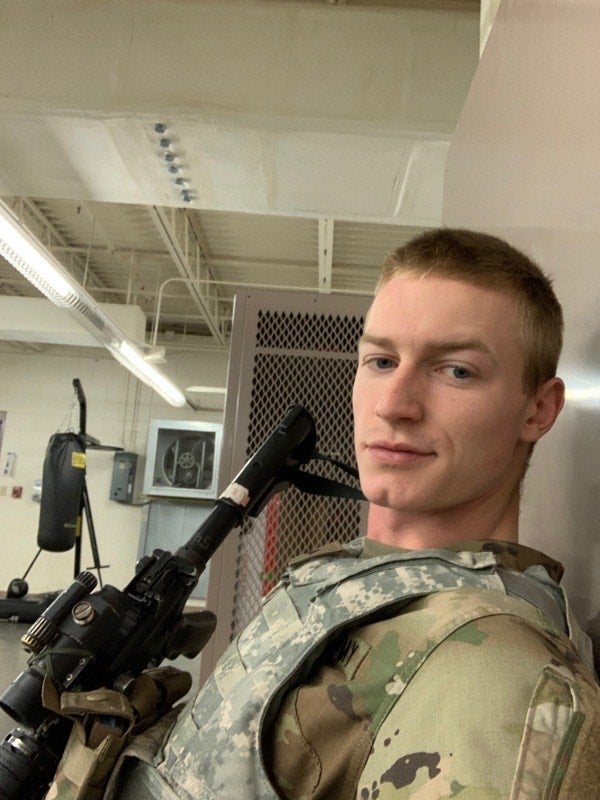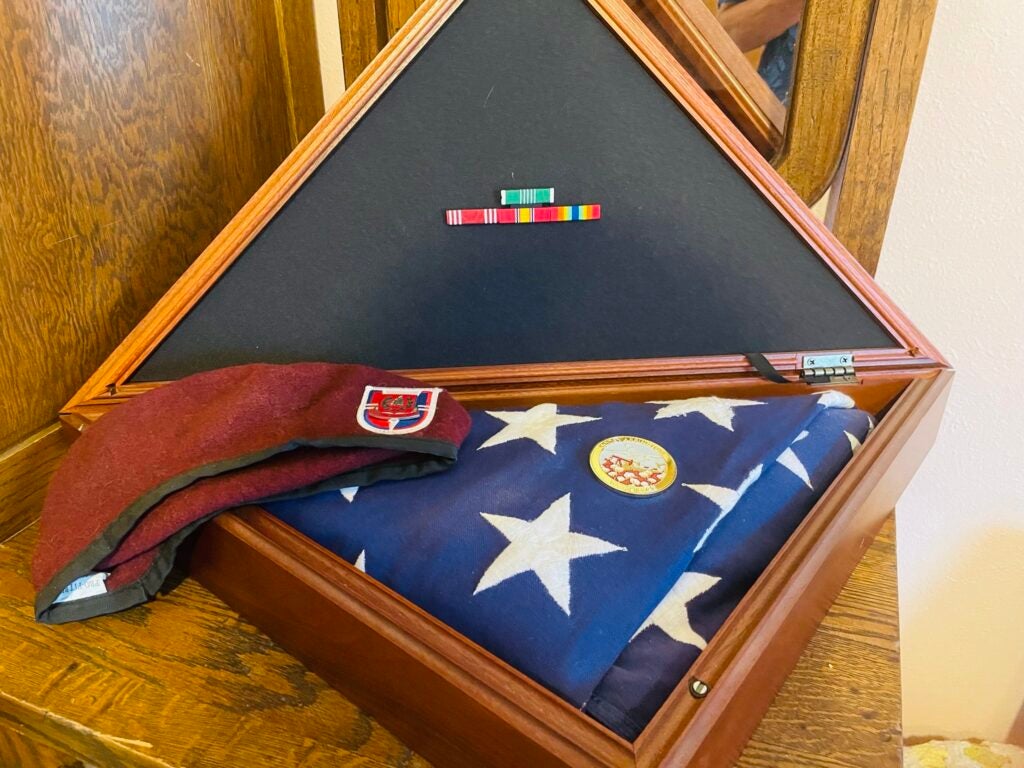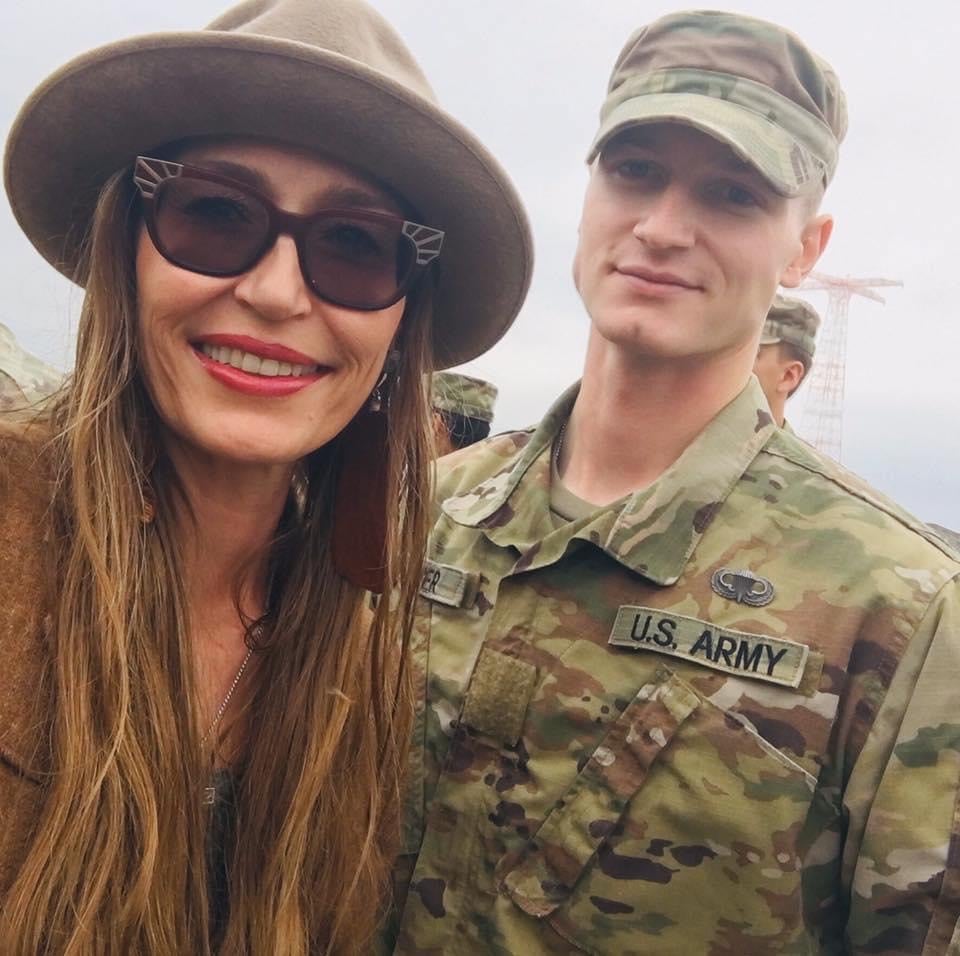On the afternoon of Jan. 21, 2020, Pvt. Caleb Smither was found dead in his barracks room at Fort Bragg, North Carolina. Smither was assigned to the maintenance platoon of the 37th Brigade Engineer Battalion, part of the 82nd Airborne Division’s 2nd Brigade Combat Team. Just 19 years old, Smither had been at Fort Bragg for a little over seven weeks.
It was the first day back from a four-day weekend and Smither had not been accounted for that day. Smither had spent the previous week reporting to sick call and Womack Army Medical Center with severe headaches, nausea and sensitivity to light, for which he was prescribed medication and placed on quarters, after hitting his head on the radiator of a vehicle in the motor pool. Shortly before 3 p.m. Smither’s team leader, a specialist, asked the duty desk at the barracks for the keys to Smither’s room, according to a redacted Army Criminal Investigation Division (CID) report obtained by Task & Purpose. There, they discovered Smither’s body on the floor of the barracks room. According to the CID report, one of the soldiers present checked for a pulse, but it was fruitless: Smither was dead and had been for some time.
It was the first time anyone had actually seen or checked on Smither in at least five days — and his family is demanding the Army answer: why?
‘He was like everybody’s brother’
Smither grew up in Wolfforth, a small town outside of Lubbock, Texas. He ran track, liked camping and archery, and wanted to become a paratrooper. On his arm he got a tattoo reading “Amat Victoria Curam,” Latin for “victory loves preparation.”
“He was like everybody’s brother,” said Smither’s mother, Heather Baker. “He was just always so determined to show how strong he was.”

On Smither’s last counseling statement, he listed his goals for his young career. He wanted to be a better mechanic, perhaps to attend Air Assault school. Most of all, he listed his desire to continue learning how to be a better soldier.
Smither enlisted in May 2019, as a construction equipment repairer. He completed basic training, advanced individual training, and airborne school before briefly returning home in November of that year, as part of the Hometown Recruiter Assistance Program. While there, he visited the school where his mother teaches and spoke with students.
“The last night he was home I was just hanging out by his door,” said Baker. “And I was just kind of apologizing for all the difficult times we had, and he told me ‘Mom, you don’t have to cry because all those experiences have made us who we are.’”
That visit home was the last time his family would see him alive. He arrived at Fort Bragg in December.
‘I felt very guilty about not checking up on him and was scared’
At some point in early January 2020, Smither was working on a piece of equipment known as a Deployable Universal Combat Earthmover, or “DUCE” with another soldier when he hit his head on the radiator. According to the private who was with Smither, he rested briefly after the injury and then returned to work.
There was some confusion as to when Smither was initially injured. Some soldiers told CID investigators that he hit his head on Jan. 9. Others said it may have been later, on Jan. 13.
Regardless, the other soldier who had been working with Smither on the “DUCE” told CID investigators that Smither seemed fine immediately after hitting his head, but soon began to show signs of distress.
“The next day his head seemed much worse. He was squinting, rubbing his head where it hurt, rubbing his eyes,” reads the soldier’s statement given to CID.
That soldier, who had known Smither since advanced individual training, told CID investigators that he called her in the early morning hours on Jan. 14, leaving a voicemail in which he was in tears because the pain in his head was unbearable. In the morning, she went to Smither’s barracks room and placed some shirts soaked in cold water on his head as a compress to ease the pain. That morning was also the first time Smither went to sick call.
When his team leader arrived to take him to Womack Army Medical Center, Smither was reportedly wearing goggles and saying that his eyes were bothering him and he was unable to sleep.
Smither’s condition was noted as “improved” when he was discharged and he was prescribed ibuprofen and acetaminophen – pain medication – and ordered to rest for 24 hours, to treat his headaches. On the ride back, his team leader told CID investigators that Smither looked “pale and shivering.” Smither asked the specialist to drive slowly. On the way back to the barracks, Smither’s team leader cranked the heat up in his truck and bought him Powerade to help with the dehydration.
The next day, Smither arrived for formation at 6:30 a.m., but he was in such bad shape that he was once again taken to Womack Army Medical Center. After being given water, Smither began throwing up. He was given a CT scan, more medication, and once again told to stay in his room and rest. The drive back to the barracks would be the last time anyone could definitively say that they had seen Smither.
In interviews with CID investigators, the soldiers in Smither’s unit gave conflicting accounts of what happened next. Smither’s platoon leader and first sergeant described him as a motivated and well disciplined soldier to CID investigators, but there seemed to be little or no plan to account for Smither after he returned from the hospital.
A simple question such as who, if anyone, was supposed to check on a soldier who had gone to the hospital for two days in a row, was initially met with different answers or admitted lies. In a military that is built around tight-knit units and teams, the fact that a visibly ill soldier could remain in his room for at least five days with not one person checking on him suggests a breakdown in leadership.
“A soldier shows up to formation wearing goggles, and no one checks on him for the entire weekend?” said Daniel Maharaj, the lawyer representing Smither’s family.
“What’s astonishing is that people knew there was something wrong with him, but didn’t do anything to help him. Why is there no process to check on people on quarters?” Mahara said. “He died surrounded by his fellow soldiers but no one cared to check on him.”
Smither’s team leader was recommended for non-judicial punishment for lying to CID agents, according to the investigation, but little other action seems to have been taken. As the investigating officer noted, nothing about these brief conversations to check on Smither over the long weekend constituted a formal order.
Smither’s squad leader told an investigating officer that he had asked someone to look after Smither “as a favor if he had nothing going on over the weekend.”
“What constitutes a formal or informal order?” said Maharaj. “There is never any clarity on this.”
Smither’s squad leader was leaving Fort Bragg for a training course that weekend, leaving Smither’s care to his team leader. The team leader, a specialist, told CID investigators that he was out of town on Friday and Saturday, but said that he had tried to check in on Smither that Sunday. A day later, he admitted that he had lied and had no contact with Smither since Thursday, Jan. 16.
“I felt very guilty about not checking up on him and was scared,” the specialist told CID investigators.
Another soldier, a corporal who was not in Smither’s direct chain of command but who told investigators that he knew Smither, said that he heard around the company that Smither’s room “smelled like shit.”

He told investigators that he called Smither on Friday, Jan. 17, but also said that he had been drinking that night and hadn’t used his personal phone to make the call. The corporal was also one of the people Smither’s team leader told CID he had lied to about seeing him over the weekend.
For whatever reason, the CID report seems to cast some suspicion on the corporal, noting that he was “getting irritated when he was asked questions about when he last saw PV2 Smither.” He is the only individual on the CID report who is remarked upon as seeming defensive in any way to questioning.
“That’s one of those questions we want to get answers on,” said Maharaj. “This person was clearly prominent enough for CID to look at, so what is his role in the case?”
Phone records from Smither’s phone provided by his family’s lawyer show that he didn’t call or text anyone after Wednesday Jan. 15.
The mention of the smell from Smither’s room, however, seems to indicate that there was some knowledge of a problem in the barracks that weekend.
Smither’s roommate, a specialist, told CID investigators that he didn’t know Smither that well. They were on different schedules, and ultimately just two junior enlisted soldiers who had only been roommates for about six weeks. They had their own rooms and shared a common space and that was it — Smither was just another private who might occasionally accompany him to Buffalo Wild Wings to watch a UFC fight and who happened to be sick.
On Thursday, Jan. 16, the roommate cleaned the common area and placed some clothes at Smither’s door. After being out of the barracks for a couple of days, the soldier told investigators that he sprayed the common room with Febreeze that Sunday, Jan. 19, noting a foul smell. He thought that he may have heard some noises from Smither’s room, but wasn’t sure.
On Monday, Jan. 20, he sprayed Febreeze again, but the smell was only getting worse. Early Tuesday morning, the day Smither’s body would finally be discovered, the roommate left for his morning shift at the dining hall, with the clothes he had left by Smither’s door still untouched.
When reached for comment, Fort Bragg public affairs referred Task & Purpose back to a statement from 2021, when a spokesman for the 82nd Airborne Division said that “We continue to mourn the unfortunate loss of PV2 Caleb Smither, and we remain diligent in our practices to care for, monitor and supervise injured paratroopers throughout the recovery process.”
Questions remain and answers may be a long way off
Five months after Smither’s death, an Army autopsy concluded that it was meningitis that killed him. According to the Centers for Disease Control, meningitis causes a bacterial or viral infection around the protective membranes of the brain and spinal cord. The symptoms include fever, headache, nausea and sensitivity to light. It can also be brought on by head trauma.
Smither received his meningitis vaccine when he joined the Army, in May 2019.
While the Womack Army Medical Center first diagnosed Smither with post-concussion syndrome, the final report from the Army concluded that Smither had died from a meningitis infection, although the disease, which is highly contagious, had apparently not infected anyone else in the 37th Combat Engineer Battalion, even those who had driven him to sick call and treated his fever.
“Wouldn’t such a contagious disease raise a red flag?” said Smither’s mother, Heather Baker.
‘I just want some accountability for what happened to Caleb’
In 1947, Army Lieutenant Rudolph Feres died when his barracks caught fire due to a defective heating system. Feres’ widow filed a lawsuit, alleging negligence on the Army’s behalf. The case went all the way to the Supreme Court, ultimately being decided in the 1950 case Feres v. United States. The court ruled that the military could not be held liable “for injuries to members of the armed forces arising from activities incident to military service.”

It established a precedent called the Feres Doctrine, barring service members and their families from suing the military for negligence or wrongdoing that occured in the course of a service member’s duties — though critics of the doctrine argue that it has been interpreted far too broadly.
For decades, here’s how it worked: If Army doctors overlooked a soldier’s stomach cancer diagnoses for four years, then the government would not be liable. If a Navy corpsman was given a deadly amount of painkillers after a surgery, the government was not liable. If an Army nurse was doused in gasoline and lit on fire by a coworker she had reported as feeling unsafe around, the government would not be liable. And in Smither’s case? Until very recently, the Army would have been free from any liability.
In 2019, Congress passed an act allowing servicemembers to bring medical malpractice claims against the military. It was called the Stayskal Act, named after Sgt. 1st Class Richard Stayskal, an Army Green Beret who’s lung cancer was misdiagnosed for months while stationed at Fort Bragg. Stayskal’s misdiagnosis occurred at Womack Army Medical Center — the same base hospital where Smither was seen.
Maharaj and Smither’s family filed a claim for medical negligence in January of this year. It is still pending. The Department of Defense did not respond to inquiries as to how many claims had been filed or payed out since last year when the Pentagon issued new guidance on medical malpractice claims. However, a briefing given by the Department of Defense general counsel and provided to Task & Purpose by the family’s attorney showed that, between the Air Force, Army, and Navy, of the roughly 350 claims that have been filed, only two settlement offers had been accepted, one for $10,000 and one for $20,000. At the same time, the Department of Defense has reportedly been allotted $400 million to cover such claims.
“I just want some accountability for what happened to Caleb,” said Baker.
What’s new on Task & Purpose
Want to write for Task & Purpose? Click here. Or check out the latest stories on our homepage.
